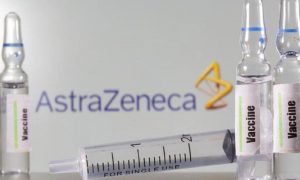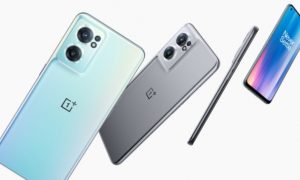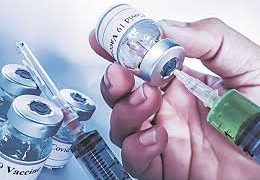Tech Mahindra has shown the world, including its own customers and partners, how an IT company can actually get into life sciences and go deeper, the chief innovation officer of Maker’s Lab, the company’s R&D arm says.
Tech Mahindra’s R&D arm Maker’s Lab started research for developing a therapeutic drug for COVID-19 in March 2020, at the onset of the pandemic. More than a year later, it has applied for a drug patent in partnership with Indian R&D firms ReaGene Biosciences and INDRAS, and is likely to get into trial in 3-4 months, and then partner with pharma companies to commercialize it.
The whole process is likely to take two years or more, says Nikhil Malhotra, Chief Innovation Officer, and creator of Maker’s Lab.
But as more and more people get vaccinated, would such a drug be needed after two years? Malhotra answers this question and how the business potential of the expertise that the company is acquiring in life sciences.
Edited Excerpts:
At the onset of the pandemic, Tech Mahindra’s Maker’s Lab announced it was working on COVID-19 drug discovery. Could you share how the process started and the progress now?
We started studying the virus first. It took about 1.5 months to actually read about the virus and a month-long lesson with some of the virologists. Then we started delving deeper into the virus, started looking at if there are some kind of viruses already there in the history that we can draw on attention from. We had crazy ideas about whether sound could possibly produce some kind of effect, because harmonics does. In the US, one of the scientists has actually used harmonics to break cancer cells. What they believe is that every human body is essentially a harmonic system. If you read the resonance frequency, you can actually break the big thing, like a glass. We also started on molecular docking analysis (a computer assisted drug design in molecular biology), in April, on what kind of drugs can actually impact the virus. Our purpose was clear, we did not want to invent a drug, and only wanted to find already available agents, which can act as antivirals. There are 8,000registered FDA drugs, and one of them could produce the impact. Using molecular docking, we brought it down to 17. We reached out to our partners ReaGene Biosciences and Hyderabad-based INDRAS, who found that the 17 we found were credible. From the 17, we came out with three using in vitro (studies done on microorganisms). We then had the idea to print 3D printed bio lungs and simulate the impact outside of the human body. Out of that one came out that was reacting well to the virus, was anti-diabetic and also prevents blood clots. All these took about a year and in March we decided to file a patent. These are all simulation studies. We need to get to the next stage where we should be trialing it, both in animal studies and humans.
We already have mRNA based vaccines such as Pfizer and Moderna and recombinant vaccines such as AstraZeneca and inoculation is gaining pace. How relevant will therapeutic drugs be for COVID-19?
Vaccines have a different impact from therapeutics. Vaccines will help create your own antibodies. For instance, mRNA vaccines will directly impact the virus, and AstraZeneca vaccines that we are using will build up your antibodies to fight the virus. But without therapeutics, it becomes very difficult to control the stem of the flow. While the vaccines have been given, it still takes time for you to develop antibodies. You are still liable to be an asymptomatic patient, sometimes when you can carry the viral load and liable to spread it across. These therapeutic drugs can actually be utilized in two cases. Number one is when vaccines are given along with these therapeutic drugs, they can augment the vaccine flow and they can also impact on the virus. And the second is, in certain cases where you can’t give a vaccine, therapeutic drugs become useful.
You have applied for a patent, how long will the whole process take before you can come out with a product?
We are actually now at a stage when after three to four months, we can start the animal trials. Most animal trials take about 1.5-2 months. If it succeeds then we go into the first phase of human trials to see whether it works. Since it is not a new drug, but a repurposed one, it will take less as per my estimation. It will take us about two years.
You are saying it is going to take two or more years to market the drug. Already a large portion of people have been vaccinated in the US, Europe. In the next two years, India will get there as well. Do you see any takers for the drug?
We are not sure, number one. Number two, I am not sure about the virulence of this virus, whether it is going to last for 1-1.5 years, or it is going to last a little bit longer than that. It just keeps evading in some way or the other. You never know whether a new vaccine would come out with booster shots, whether vaccines would be, my fingers are crossed when I say that, at least most of the variants that this virus would produce would actually be taken care of even if it is at 60-70 percent. But they may not go away and may not drop out even after two years as well. That is where we are just forecasting the future at the moment. Now the other challenges are that it is not the end of the epidemics, these microbial infections. As we see more connections and more technology being utilized, you would have a lot of impact of these epidemics, even later down the line. It’s not the be all and end all as what has happened has happened before, though they were all localized like SARS. So the whole idea from a technology community and the scientist has been that, can we draw apipeline which will be faster. This (type of epidemic) may not occur after two years, but something else would. But can we look at a certain kind of a mechanism or a pipeline which gets us to these therapeutics and vaccines faster. I think that’s where the effort of the community has been so that we can at least save a large number of lives from. That’s the whole idea.
How will you commercialize the drug? Can you also share the revenue impact?
So, once we actually develop this, and let’s say this is two years hence, the first idea is to actually take it to pharma companies, and actually develop a kind of that drug, it could be a tablet or drops, and then do joint marketing with them. Business is huge if it still works. I don’t have a direct number, but we just calculated in our head. For example, if the epidemic and COVID are still there, I don’t want to be there two years later, but if it’s there, the revenue numbers are upwards of millions of dollars.
How much of a loss would it be for you if the drug stops being relevant?
For us it is about the whole idea. We have shown the world and also our own customers and partners, how an IT company can actually get into life sciences and go deeper. We have also gotten a lot of work from some of our partners who are already working on it. All of this is actually going to help us draw on more value in the life sciences sector. We learnt Natural Language Processing (NLP) in terms of life sciences, which is going to be a huge area. We are already helping some of our customers. We learnt about molecular docking and modeling, which can actually come up in some of those drugs that our customers and partners are doing. We have also done our actual practical approach, where we actually went out of silicone and went in vitro as well, which has given us a completely different foray into what we are already doing.
With deep knowledge in life sciences, how much of a business potential does this present to you?
We are already getting requests from our partners and customers. We are already working with them on some of these areas since they understand now that we know genomics science. It will be upwards of about $100 million or so is something that we are actually seeing. But I am the last guy that you should consider a number from.



































